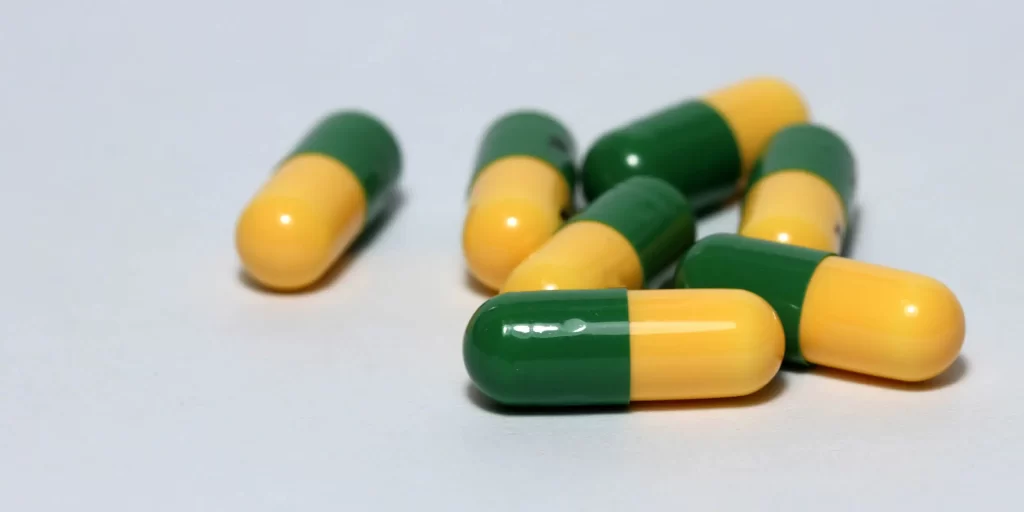
Tramadol is a commonly prescribed opioid that is used to treat moderate to severe pain. High doses of tramadol cause a sense of relaxed euphoria and general wellbeing. Tramadol also inhibits serotonin and norepinephrine “reuptake,” which increases the amount of time that serotonin and norepinephrine are available for use.
Alcohol enhances the effects of an inhibitory neurotransmitter called GABA, leading to sedation and reduced overall brain activity. In addition, alcohol influences the dopamine and endogenous opioid systems in the brain, which serve to increase the effects of opioids.
Tramadol is a powerful pain reliever and is one of the most prescribed drugs in America, so dangerous situations where alcohol and tramadol are used together can occur even inadvertently.
Why Do People Mix Tramadol and Alcohol?
The most often-cited reasons why people mix tramadol and alcohol are chronic pain relief and recreational use.

It's time to get your life back.
If you are struggling with addiction and co-occurring mental health, our expert team is here to guide you every step of the way. Don’t wait— reach out today to take the first step toward taking control of your life.
An estimated 63.4% of people who misuse opioids cite pain relief as their motive. In 2016, nearly 20 million prescriptions were written for tramadol for pain management, making it the 39th most prescribed drug in the US. Alcohol is often used in an attempt to manage pain, and severe pain can be a powerful driver for co-using tramadol and alcohol.
Because alcohol potentiates the effect of tramadol, the combination can initially be an effective pain reliever. However, regular use of alcohol and tramadol leads to the development of tolerance to both, meaning that ever-increasing doses are required in order to achieve the same effect. Consequently, people who co-use will often find that they need higher and higher doses of both alcohol and tramadol in order to relieve their pain.
Recreational use of tramadol and alcohol is popular because the combination of an opioid and alcohol achieves a more pronounced sense of euphoria than can be produced with either drug alone. Alcohol both enhances tramadol’s effect on the endogenous opioid system and indirectly increases activity in the opioid system. When alcohol and tramadol are taken together, they work synergistically; in other words, they have a net effect that is greater than the sum of the individual drugs would be. Co-using alcohol and tramadol achieves a sense of euphoria that is not reached when either drug is used alone.
Effects of Combining Alcohol and Tramadol
Under normal circumstances, the endogenous opioid system helps regulate physical (breathing, heart rate) and psychological (mood, stress response) processes. Administration of synthetic opioids like tramadol activates the endogenous opioid system, and co-administration of alcohol further potentiates the effect. This result is a transient mood elevation and a sense of relaxed euphoria that mask potentially dangerous negative physiological effects including slow, irregular breathing and heart rate.
Side effects of tramadol and alcohol co-use can be very uncomfortable, even dangerous. Common side effects include vertigo, loss of coordination, memory problems, nausea, vomiting and drowsiness. More serious side effects include stroke, unconsciousness, liver problems, coma and death.
Risks of Mixing Tramadol and Alcohol
Any time opioids and alcohol are mixed, there is a very real risk for negative and even fatal consequences. Alcohol and tramadol are both central nervous system depressants, meaning that they act to reduce overall brain activity. Opioids, in particular, are linked to respiratory depression, and because alcohol potentiates tramadol’s effects, the possibility of dangerous respiratory depression is substantially increased when they are taken together.
Respiratory depression is characterized by slow, shallow and irregular breathing that would normally cause a panic response in the person experiencing it. However, because tramadol is a potent pain medication and both drugs are sedatives, an overdose on tramadol and alcohol may prevent a normal panic response. Prolonged lack of oxygen can quickly cause coma, brain damage and death.
Liver Damage
The effects of alcohol on the liver are well known: Chronic alcohol use disorder is significantly linked to liver disease, and alcoholic liver disease has become the leading cause of liver transplants in the US. When tramadol is used as prescribed and in the absence of alcohol, it is not associated with liver damage. However, tramadol overdoses have been linked to acute liver failure, and chronic high doses of tramadol may increase the risk of liver injury. The effect of regular co-use of alcohol and tramadol on liver function can be more damaging than if alcohol was the only drug used.
Treatment for Tramadol and Alcohol Addiction
Tramadol and alcohol are powerfully addictive drugs, and when someone has become dependent on both of them, recovery can be especially challenging. However, it is not impossible.
The first step when seeking treatment is to undergo an evaluation with a medical professional who specializes in addiction. Many people with alcohol use disorder who co-use opioids will be urged to undergo medically assisted detox under the care of professionals who can intervene in the case of complications. In addition, when appropriate, pharmacotherapies may be administered to ease the uncomfortable symptoms of withdrawal.
Preventing relapse is critical in the early days of recovery. After detox and acute withdrawal are over, many people find that a residential rehab program gives them the best opportunity to maintain sobriety. For most people, residential rehab transitions into an intensive outpatient program that gradually becomes less intense as recovery progresses. Finding a rehab program that includes behavioral therapy has been shown to be valuable to people in recovery: Both cognitive behavioral therapy and motivational interviewing have been shown to be effective forms of treatment within a comprehensive rehab program.
Most people who have successfully maintained long-term sobriety believe that recovery is a lifelong pursuit that requires regular maintenance. Many rehab facilities offer aftercare programs that support people who are in recovery.
If you are concerned that you or someone you love may have a substance use disorder, The Recovery Village Ridgefield can help. Call today to learn about our comprehensive rehab programs and evidence-based treatment methods. We can help you begin your journey to recovery.



